Introduction: Solar Class: Engraving
Class table of contents:
- Solar Balloon
- Solar Engraving (you are here)
- Solar Panels
- Solar USB Charger
- Solar Powering Microcontrollers
Learn to focus the energy of the sun into a concentrated beam capable of engraving cardboard, leather, cork, wood, and other organic materials. If you ever experimented with a magnifying glass outside on a sunny day, you are probably already familiar with this technique.

The science at work here is the concentration of energy using a lens. Each ray of light carries energy along with it. Usually these rays are evenly spread out over the objects they hit, so no single point is getting a lot more or less energy than nearby areas.
The magnifying glass is a lens that focuses beams of light coming into it, concentrating many rays' energy into more localized energy. If your material is at the right distance and orientation from the magnifying glass, all the light coming through the lens is concentrated into one spot on the material, heating it up enough to burn. A similar method using fields of mirrors pointing towards a central collector is used to heat up water for steam power generators.
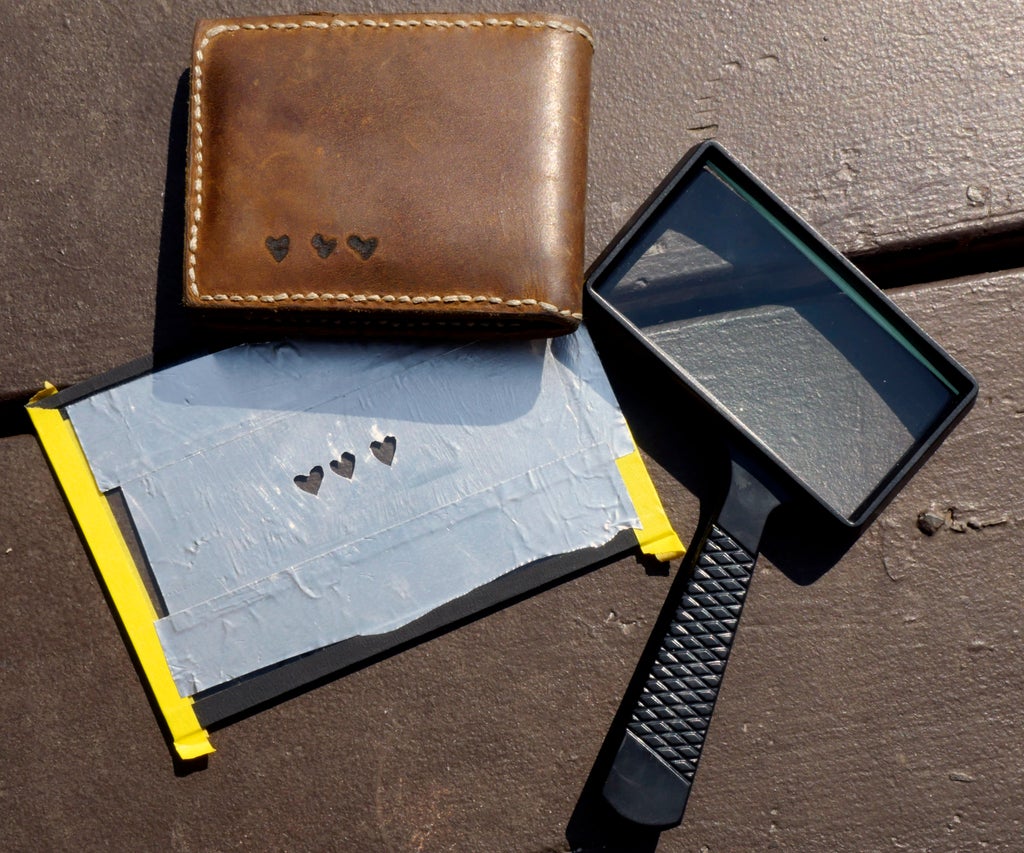
This lesson will involve creating a stencil you can use over and over, then trying it out on a few materials. To get started, read on! Let's go!
Step 1: What You'll Need

You don't need much to practice your solar engraving skills. To follow along with these instructions, gather together:
- Magnifying glass
- Small piece of glass (such as from a picture frame)
- Tape for the glass edges (masking, duct, artist, gaffer's, etc.)
- Aluminum duct tape
- Pencil or sharp implement such as an awl
- Craft knife
- Cutting mat
- Tweezers (optional)
- Dark sunglasses
- Organic materials to engrave (such as cardboard, leather, cork, wood)
- Spray bottle with water
- Fire extinguisher (recommended)
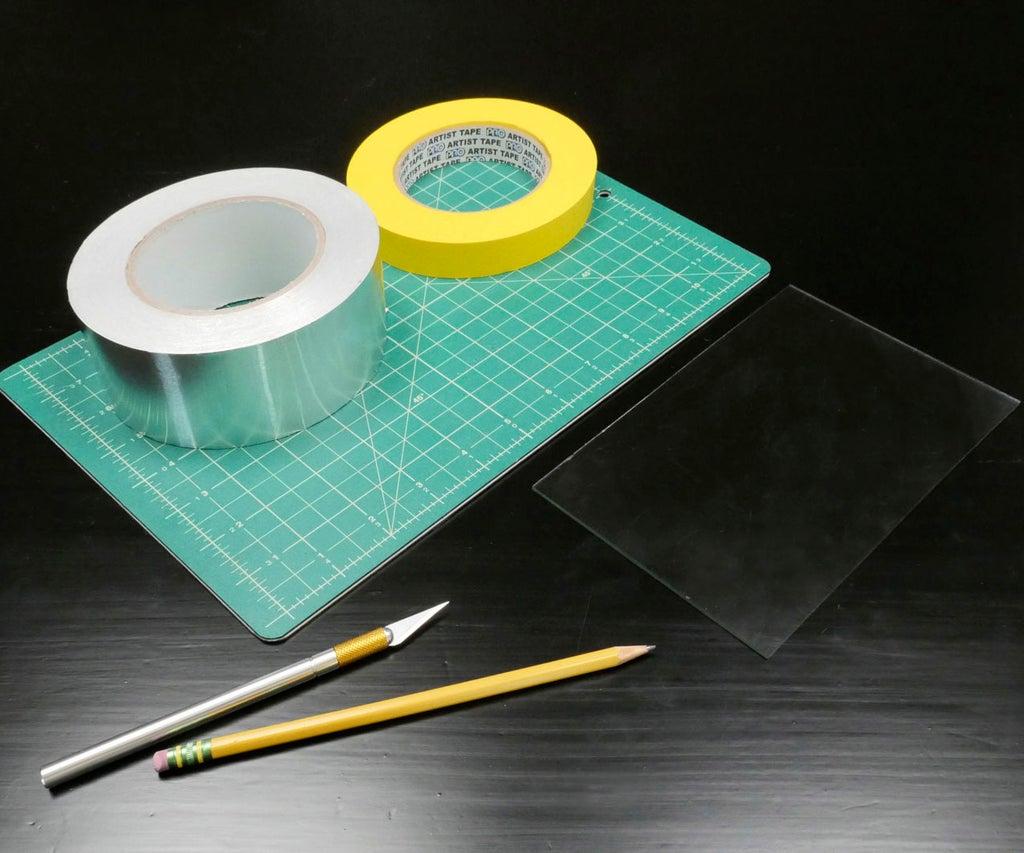

Step 2: Tape Glass Edges
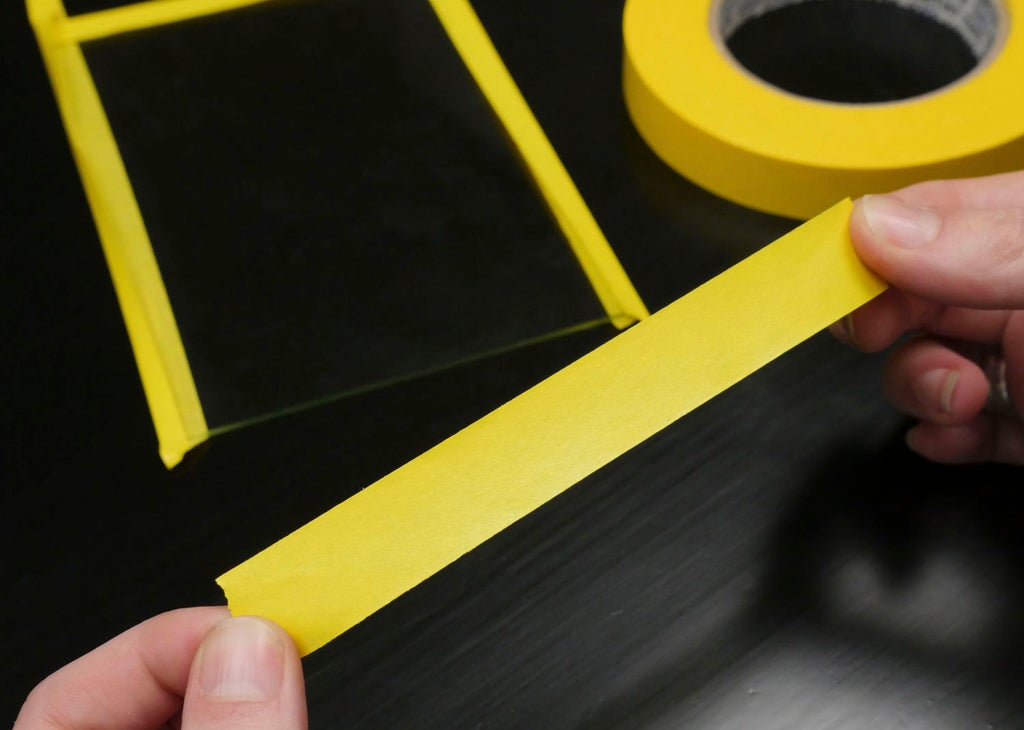
First off, let's make the glass a bit safer to work with. Tape up the edges with some tape of your choosing (such as masking, duct, artist, gaff, etc.).

When all the sharp edges are covered in tape, the glass is much safer to handle because it's less likely to cut you. Set it aside and get ready to make the stencil design!
Step 3: Draw Your Stencil Design

Grab your cutting mat, aluminum duct tape, pencil or other pointed implement, and your craft knife.
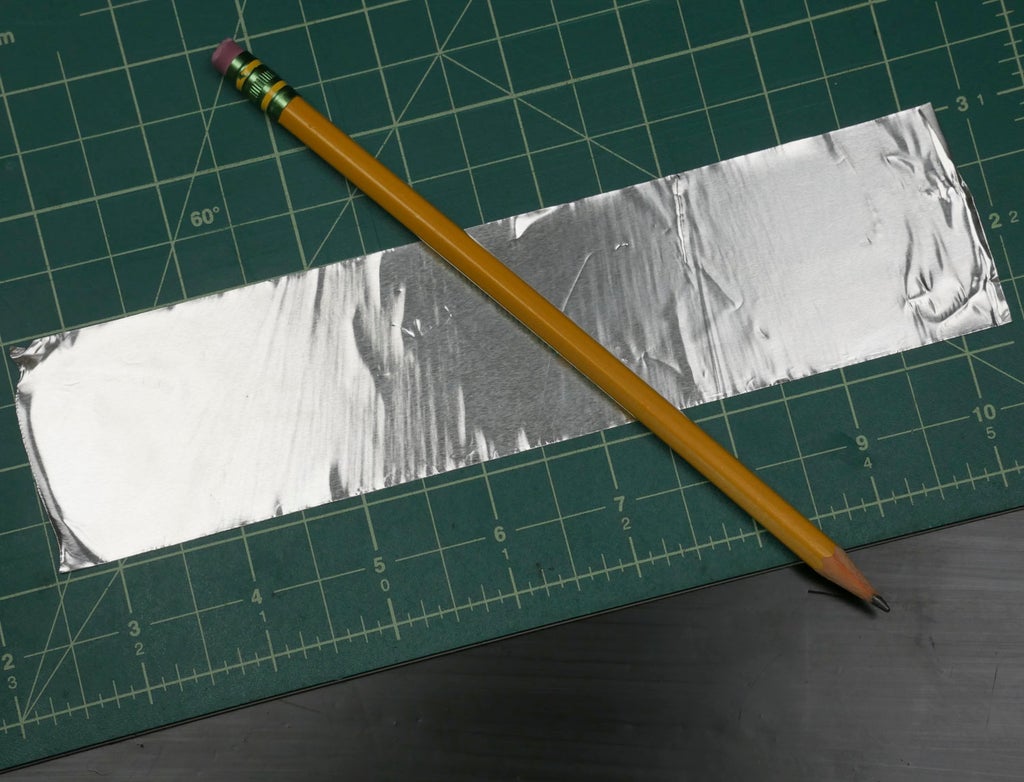
Draw and a simple design of your choice on the aluminum tape. You can use a pencil or the sharp tip of an awl— anything pointy will do. You can engrave slightly crisper lines if you place your stencil tape-side down, which requires cutting out your design backwards if it’s not symmetrical.
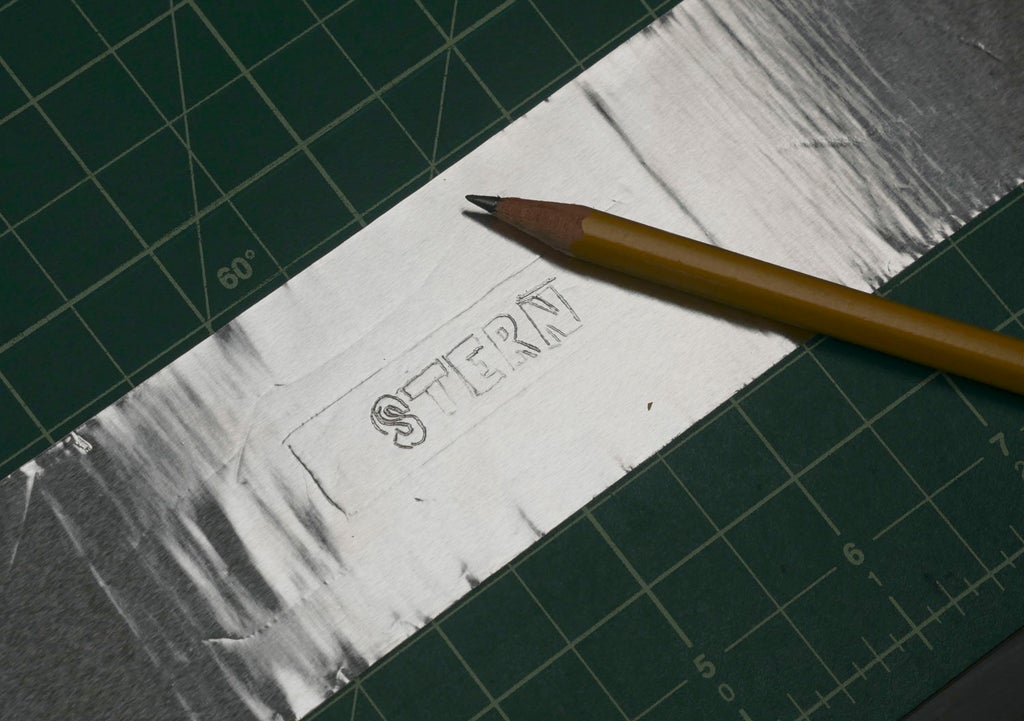
The simpler the shape, the easier it will be to transfer flawlessly to the glass. The smaller the shape, the more quickly you'll be able to engrave it with the sun. I recommend starting with some simple geometric shapes to start out! Try hearts, stars, and other shapes with simple geometry.
Step 4: Cut Out Design
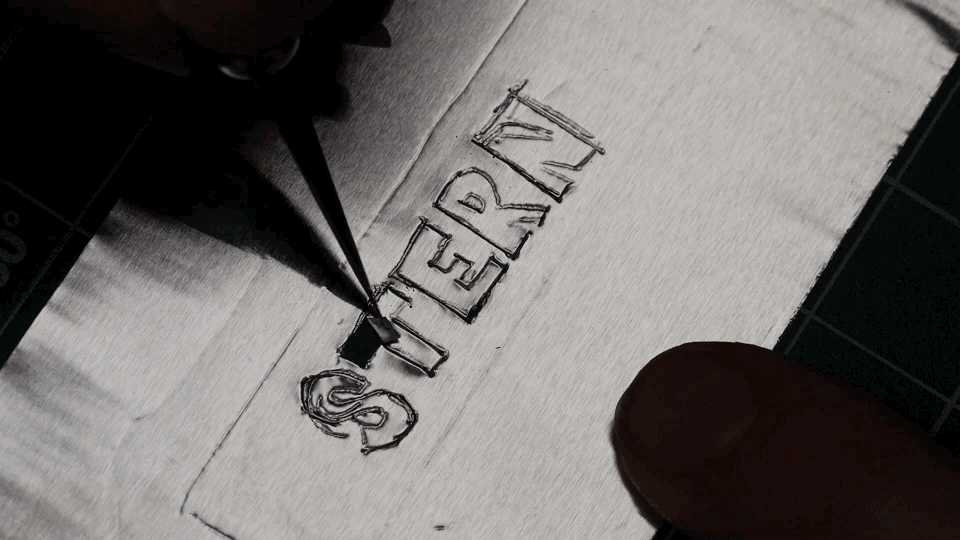
Carefully cut out your stencil design with a sharp craft knife. You can use a ruler if your lines are straight, but don't overshoot the cuts because we are keeping the stencil, not the interior shapes.
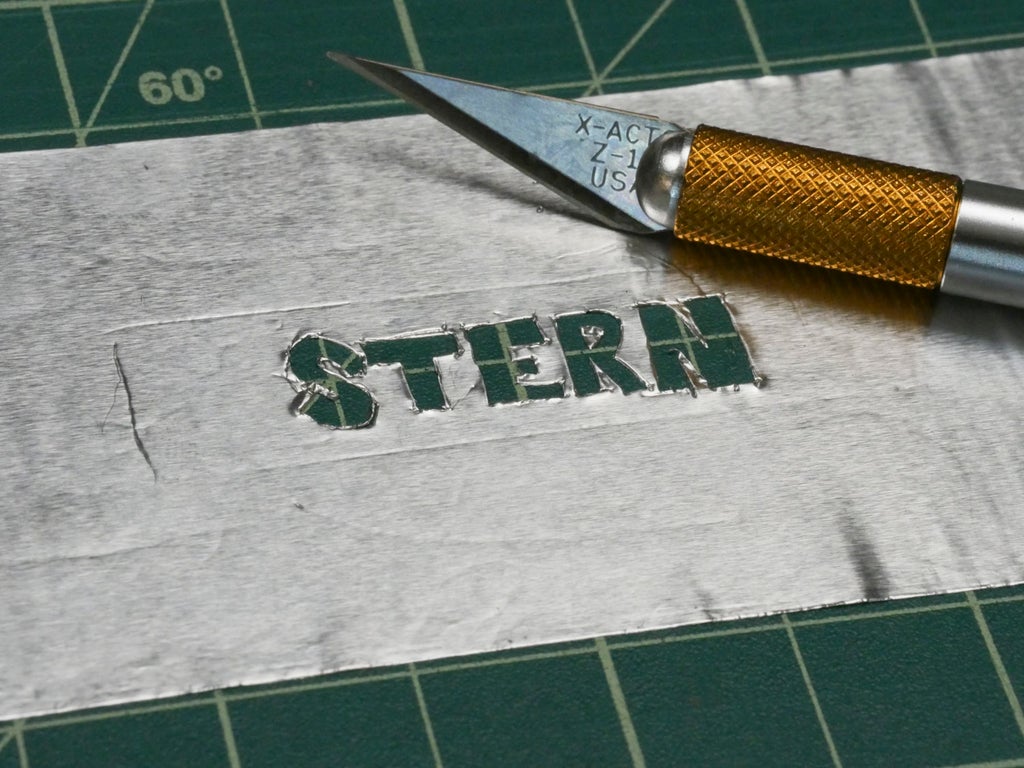
Remove the aluminum tape in the areas you desire to engrave.
Step 5: Transfer to Glass
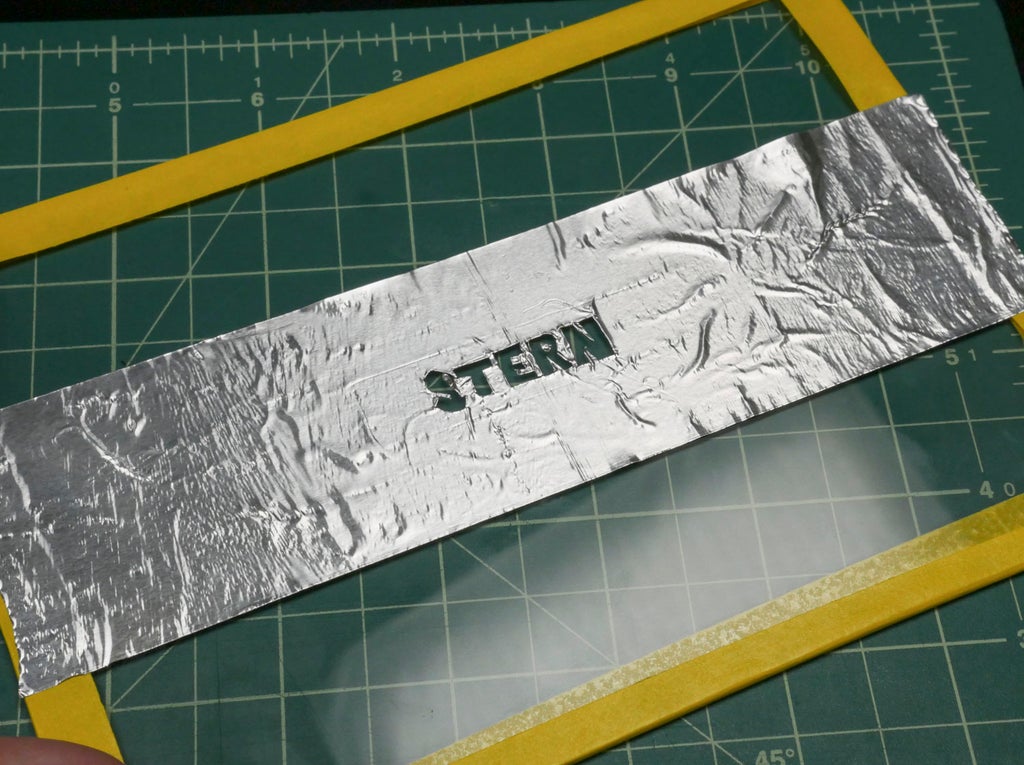
Carefully transfer the stencil to the center of the glass, and fill in the remaining glass with more metal tape.
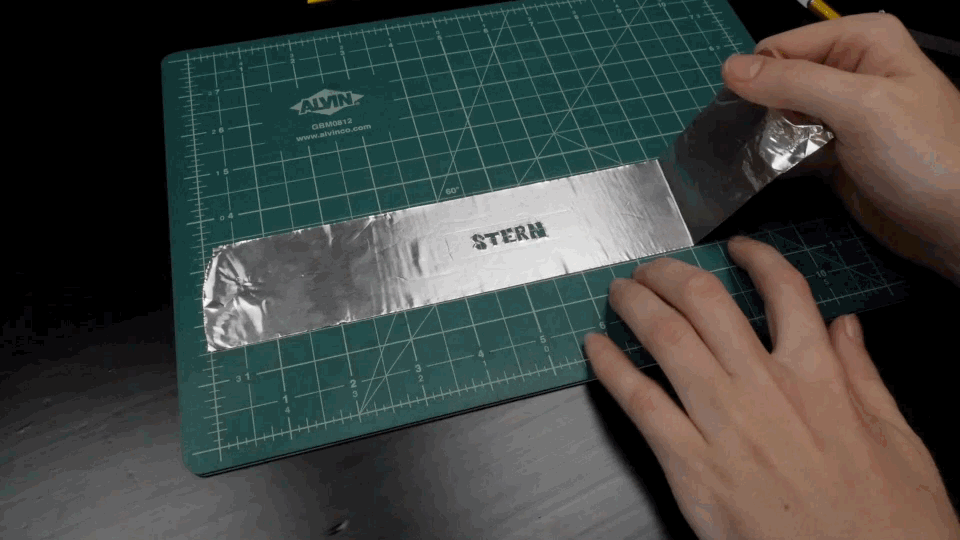
If your stencil tears or warps during transfer, use your pencil or a pair of tweezers to repair it.
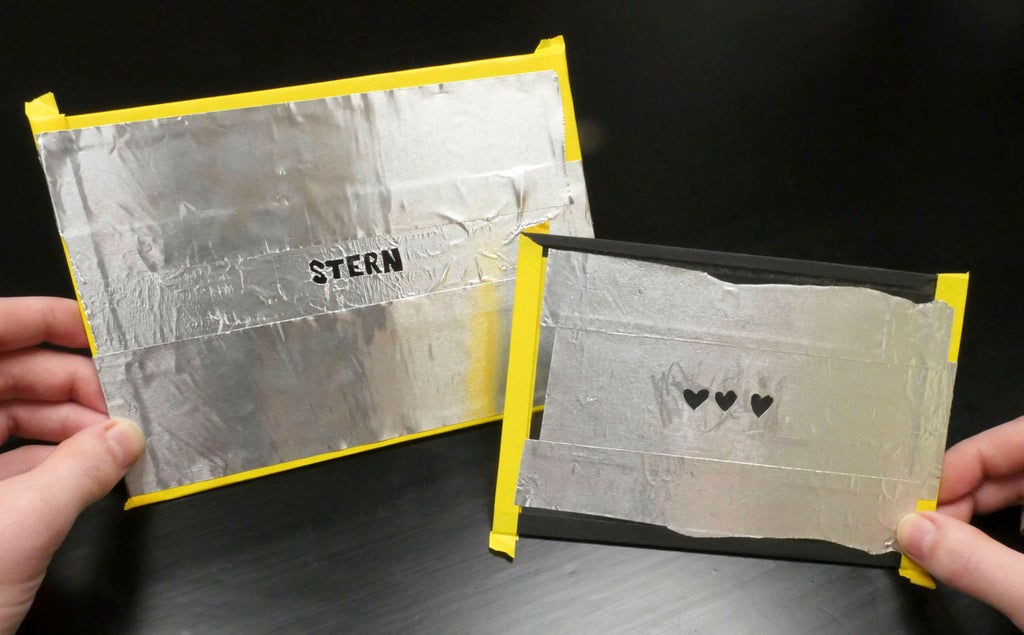
Press the tape down firmly all around the stencil area to ensure it is flat to the glass.
Step 6: Get Outside, Get Engraving

Take your new stencil, magnifying glass, and some materials with you to a bright and sunny spot where you can easily tilt your work to directly face the sun. This technique works great on leather, cork, and cardboard, and will also engrave wood with a little extra time.
It’s smart to be prepared with a spray bottle of water in case your material ignites. To stay ultra safe while using this technique, I’ve got a fire extinguisher nearby as well. The concentrated light beam gets really hot, so keep it away from your hands.
You should wear dark sunglasses to make it easier to see where your concentrated light beam is going, and also consider some sunblock and a hat.
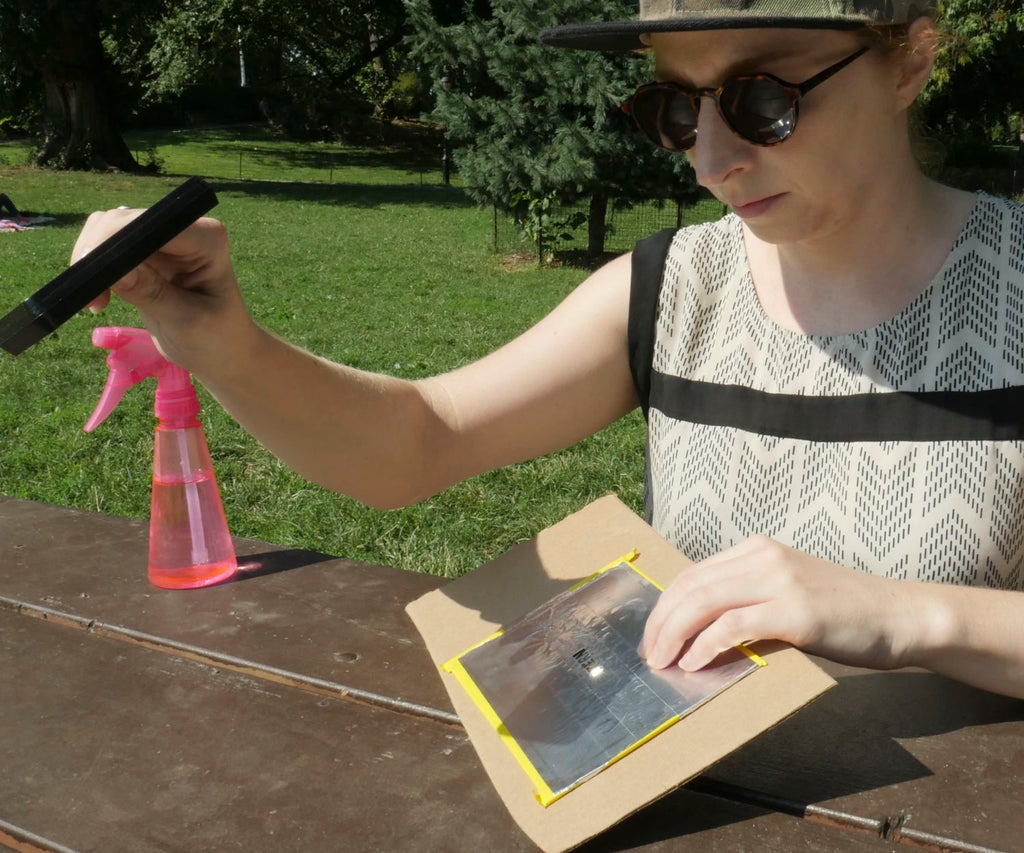

Adjust the distance and angle of the magnifying glass until the point of light is as small as you can possibly make it, and slowly move the beam over all areas of the stencil. You may start to see some smoke coming away from the engraving site. When you've passed your beam over the entire design, which may take several minutes, you may remove your stencil to see the results.

Step 7: Materials & Tips
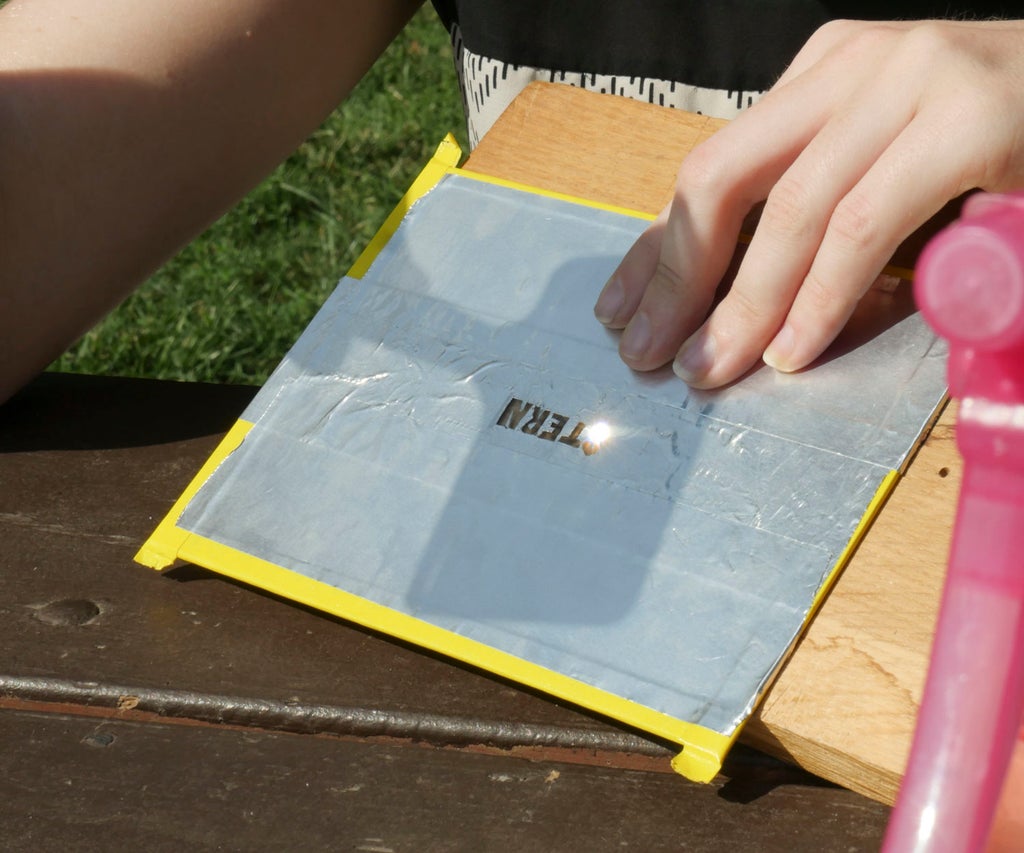
It's significantly easier to execute this technique when you can tilt your work towards the sun, which means it's easier to engrave flat, simple shaped objects than, say, the handle of a hammer. You should only engrave organic materials. Don't engrave plastics or other synthetic materials, which may produce harmful fumes and/or melt rather than engrave.

It was easy to engrave a flat cork trivet and a rectangular piece of wood. You may notice different materials require different amounts of time to engrave effectively (wood is slower than cardboard, for example).

See how it's hard to hold the stencil and the hammer up to face the sun? Consider creating a jig to hold your object if it isn't easily held at an angle from your work surface.
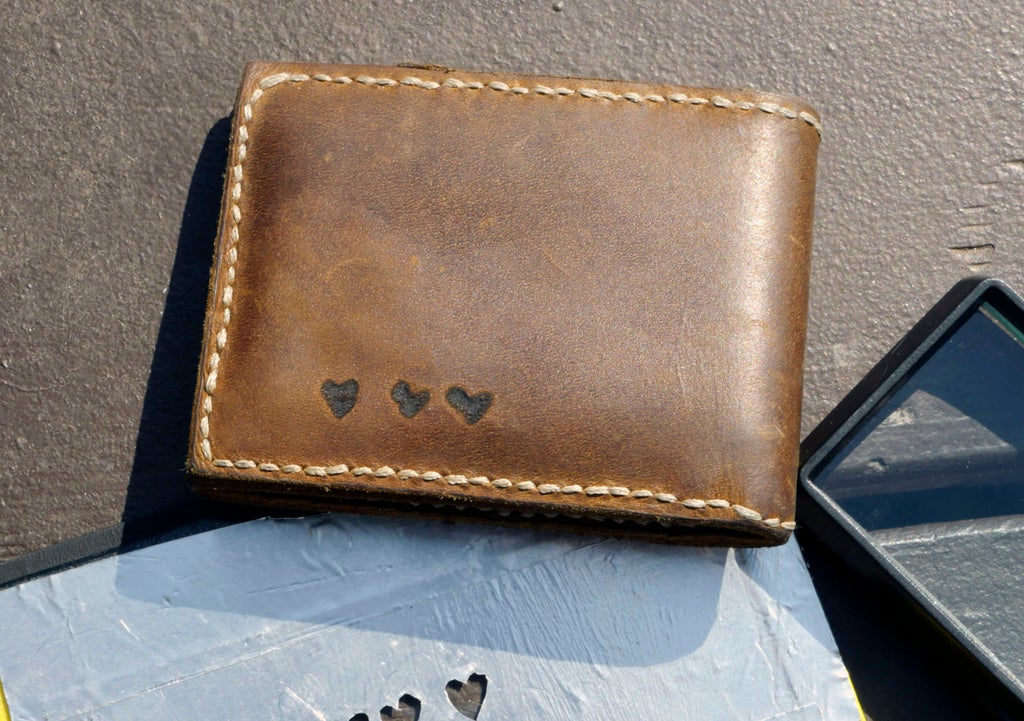
If you place your stencil tape-side down, you'll get crisper lines at the edges of your engraved areas. This requires a symmetrical design, or cutting your design backwards at the stencil stage.
Did you ever think you'd be using the physics and of light to draw? The convex shape of the magnifying glass collects photons on one side and unifies them at a single point as they exit the other side. You can use this same science to start a campfire with a pair of eyeglasses. The ease with which heat is generated depends on the steepness of the convex lens. Please be responsible with this technique, and don't start forest fires.
Step 8: Next, Try...
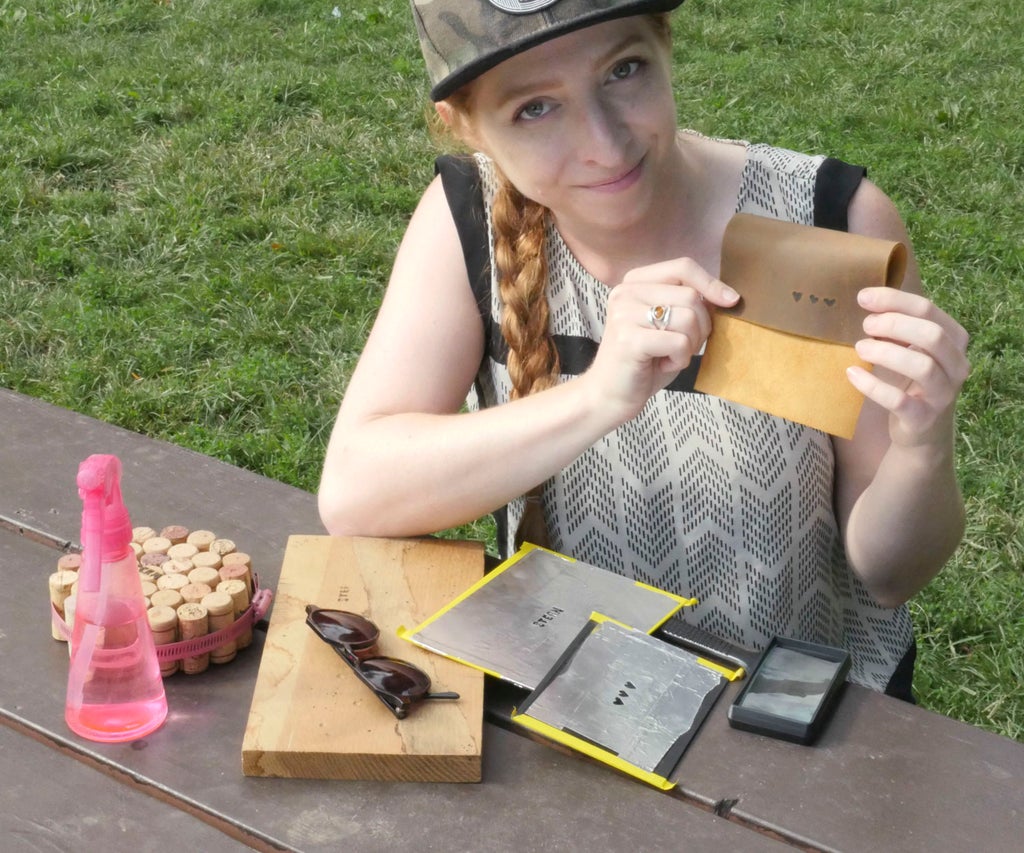
The next time the sun comes out, try it out! I’d love to see what you create with this technique. Please post a photo in the Class Project section below, and also check out the inspirational engraving projects below, and take a peek at our Laser Cutting Class to take this technique to the next level.
Class table of contents:













